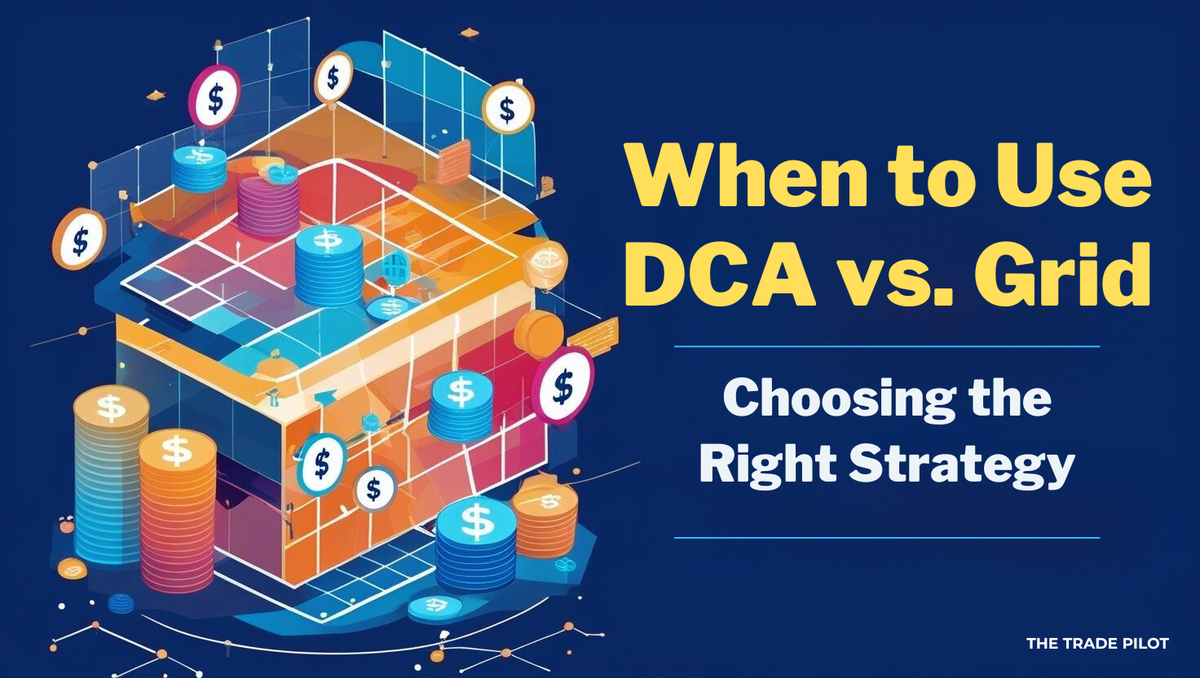As crypto markets mature and automation tools become more accessible, traders are increasingly turning to strategies like Dollar-Cost Averaging (DCA) and Grid Trading to remove emotion and guesswork from their decision-making. While both are powerful tools within a crypto trading bot like The Trade Pilot, they serve very different purposes. Understanding when to use each is far more important than just knowing how they work.
If you're already familiar with the basics of DCA and Grid Trading, this guide will help you go deeper by exploring how to decide which one fits your current trading goals, asset types, and market conditions. Choosing the right method isn't just about maximizing returns—it’s also about aligning with your risk tolerance, effort level, and strategy clarity.
When DCA Makes the Most Sense
DCA is the go-to strategy when your goal is long-term accumulation and minimizing emotional involvement. This strategy thrives in uncertain or bearish markets where prices are unpredictable or gradually declining. By spreading purchases over time, you avoid making one large buy at a potentially poor entry point.
Use DCA when:
- You want a hands-off, simple setup.
- You're planning to build a position over weeks or months.
- You're investing in large-cap, relatively stable coins like BTC or ETH.
- Market conditions are unclear or trending downward slowly.
This strategy is especially helpful for users who want to automate their savings without constant monitoring or active trading. It smooths out volatility over time, making it less stressful to enter the market.
When Grid Trading Shines
Grid trading, in contrast, is about actively capturing gains from market volatility. This strategy places a series of buy and sell orders at predefined price levels, profiting from market swings. It works best when a coin is moving within a price range rather than trending heavily in one direction.
Choose Grid trading when:
- You're dealing with volatile or range-bound assets.
- You want to take advantage of short-term price fluctuations.
- You're actively managing trades and fine-tuning performance.
- You’re comfortable setting parameters like rebuy triggers, multipliers, and take profits.
It’s particularly effective for altcoins that tend to pump and dump frequently, where regular DCA might result in long-term bags instead of steady profits.
How to Decide Between DCA and Grid
Rather than viewing them as competing strategies, think of DCA and Grid as different tools for different jobs. If your portfolio includes both stable assets like Bitcoin and more speculative altcoins, you might benefit from using both strategies at once—DCA for accumulation and Grid for shorter-term gains.
Here are a few guiding questions to help make the decision:
- Are you trying to grow long-term holdings or generate frequent profits?
- Is the asset you're trading stable or volatile?
- Do you want to automate and forget, or tweak and monitor?
- Are current market conditions trending, flat, or uncertain?
The more passive your strategy and the more long-term your vision, the more DCA tends to fit. If you enjoy seeing action, reacting to market shifts, and configuring a bot with precision, Grid may be a better match.
You Can Always Adapt
Keep in mind that market conditions change—and your strategy can too. If you're unsure, it's perfectly fine to start with DCA and later explore Grid trading once you're more comfortable. With The Trade Pilot, switching between strategies or testing them on different assets is simple and customizable.
Also, some users experiment by running both strategies at once—on separate bots or assets. For example, DCA into Ethereum while running a Grid bot on a more volatile coin like PEPE or SHIB.
Conclusion
Choosing between DCA and Grid is less about which strategy is better and more about which one fits you. Consider your risk tolerance, goals, and the nature of the asset you’re trading. DCA offers a calm, steady path for long-term investors, while Grid is more suited for active traders looking to capitalize on price movements.
By understanding the strengths and best-use scenarios for each, you can confidently select the approach that supports your success in automated trading. And remember: with The Trade Pilot, you're not locked into one path—you’re free to adapt, experiment, and refine your strategy as your skills and the market evolve.

